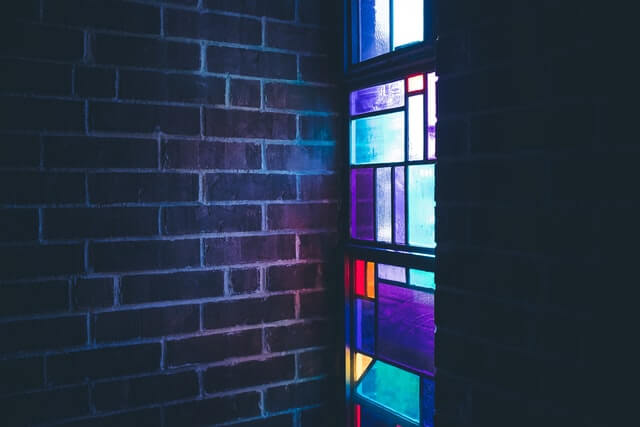
When Do You Choose Your Glass?
Frankly, most people don’t! The window or glass manufacturers will often already have selected what kinds of glass to use for your type of project. Glass options nowadays are very complex and technical and what decisions homeowners can make are often about specific performance targets or aesthetics. You need to communicate what you want. The manufacturer or contractor evaluates your needs and recommends to you a final product. Nowadays, the options are all double pane or triple pane windows.
The Origins of Single Pane Windows
Single pane windows – meaning windows made of a single layer of glass – are what humanity has been using as windows for a multitude of millennia. We take silica crystals – sand – and mould it into transparent sheets we have been looking through the lens of innovation. We have coloured our glass with dyes, embedded them with lead for decoration, and invented wondrous uses for changing how light interacts with glass. In all cases though, glass Single Pane windows are leaving our contemporary building practices for good. Glass alone provides poor insulation. Single-layer installations should be renovated if if they can.

The exceptions are historic. Stained glass fixtures are single-layered; so too are many decorative windows on old castles, homesteads, cottages, and cabins. Modern window systems do provide options that preserve what made these windows iconic. Stained glasses, leaded glasses, or molded glass designs are difficult or impossible to replace. Specialty glass and systems providers have options for specific applications but these are mostly unaffordable for consumers. Homeowners with these special glasses have great difficulty sourcing vendors for replacement.
The Advent of Double Pane Windows
Back in the 1950 at the peak of the energy crises of the 20th century builders, architects, and property managers were looking for ways to reduce their energy consumption. The double pane innovation led to a new keystone in energy efficiency thought because of how they revolutionized the construction industry. The primary innovation that these new glazing technologies introduced was air. Air! Sealed air between two panes of glass dramatically reduced the amount of energy that can pass through windows. Innovators used the ideas from light bulbs and vacuum tubes and applied those to High rises, skyscrapers, railcars, and airplanes all started to use this new technology to implement a cost-effective means of lowering passive energy losses.

Double-glazed windows are the standard for building codes in North America because they provide affordable energy savings for any project. Dual layer window systems can accommodate almost all needs that windows service. The two-layers of glass provide significantly increased sound resistance compared to single-pane and homes are more comfortable because of the stabilization of temperatures. With two panes of glass we now have 4 glass surfaces on which we can place coatings to change the mechanical properties of your windows to meet energy requirements, reduce the heat changes from direct sunlight, and include decorations between the glasses. These muntin bars allow us to imitate the decorative styles indicative of the creativity of wooden windows. Really, we are free to do almost anything that we want but there is a maximum to the ability of double-glazed windows to be insulators.
The Modern Miracle of Triple Pane Windows
Triple pane windows are everything that double pane is and more. Triple pane windows are more efficient; reduce more sound; are more customizable for glass coatings and; they qualify for government rebates. We can do styled and shaped windows. The aesthetic selections have the same options as in double pane. What sets three pane windows apart from the rest, however, are primarily the unmatched energy efficiency possibilities.
Triple glazed windows are more expensive and with current glass prices everyone is thinking about their bottom dollar. While what I have said above is true, sometimes the value equations encompass more than just energy efficiency. Because many of the options are identical between triple and double glazed windows there can be better value in purchasing double glazed over triple glazed when energy is not the primary concern. While the difference between one and two pane sound reduction is significant, triple pane windows are only marginally more sound-efficient. Sound resistant glasses are available to more noticeably decrease sound.
Which Glazing Style is the Best Fit for Your Project?

Well, that depends on your project. The first step should be to figure out what you want from your windows. There are four things that most homeowners prioritize: aesthetics, energy, safety, and sound. Once you have an idea of what order those sit in your priorities then your dealer or manufacturer can guide you through the choices needed to make your purchase an informed and positive experience.
If energy is key, you must go for the three.
If loud sounds won’t do, then its two’s for you.

